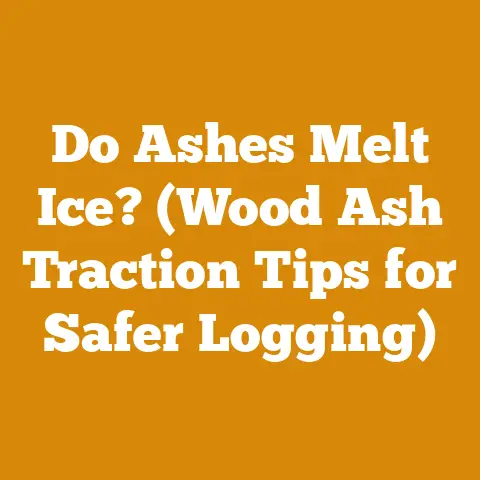Water Heater Lift Jack Guide (5 Pro Tips for Safe Hoisting)
It was a sweltering July afternoon, the kind where the air hangs heavy and even the cicadas sound exhausted. I was helping my neighbor, old Mr. Henderson, replace his water heater. Now, Mr. Henderson, bless his heart, was a man who believed in tackling everything himself, even at 80. The problem? He decided to lift the old water heater out of the basement by himself. Let’s just say, the sight of him struggling, red-faced, with that tank, which felt like it weighed a ton (because it practically did, full of sediment), was a wake-up call. That’s when I realized just how many people underestimate the sheer danger of handling these things, especially when they’re waterlogged and corroded. That day, we averted a potential disaster, but it underscored the critical need for safe and efficient water heater handling – and the necessity of a good water heater lift jack.
This guide isn’t just about how to use a water heater lift jack; it’s about doing it safely and smartly. I’ve spent years in the wood processing and logging world, dealing with heavy and awkward objects daily. The principles of leverage, load distribution, and safety are universal, whether you’re lifting a log or a water heater. We will cover the essential pro tips for safe hoisting, focusing on the nuances that can mean the difference between a successful replacement and a serious injury.
Water Heater Lift Jack Guide: 5 Pro Tips for Safe Hoisting
Replacing a water heater is often a homeowner’s rite of passage, but it’s a task fraught with potential hazards. Mishandling a water heater, especially during removal, can lead to back injuries, property damage, or even worse. Using a water heater lift jack significantly reduces these risks, but only if used correctly. Let’s dive into five crucial pro tips that will ensure your water heater hoisting is safe, efficient, and successful.
1. Understanding Your Equipment: The Water Heater Lift Jack Deconstructed
Before you even think about touching that old water heater, you need to know your lift jack inside and out. There’s more to it than just a handle and some wheels. It’s about understanding the mechanics, capacity, and limitations of your equipment.
- Types of Water Heater Lift Jacks: There are generally two types: manual and hydraulic. Manual jacks rely on your muscle power to crank the heater up, while hydraulic jacks use fluid pressure to provide a smoother, easier lift. Hydraulic jacks are generally more expensive but offer better control and require less physical exertion.
- Load Capacity: This is the most important factor. Check the manufacturer’s specifications. Don’t even think about using a jack rated for 300 lbs on a water heater that weighs 400 lbs when full of water and sediment. Overloading the jack can cause it to fail, leading to a catastrophic drop and potential injury. Always err on the side of caution and choose a jack with a higher capacity than you think you need.
- Stability Features: Look for jacks with wide bases and sturdy wheels. A stable base prevents tipping, especially on uneven surfaces. Swivel wheels make maneuvering in tight spaces much easier.
- Safety Mechanisms: Some jacks have built-in safety locks that prevent the jack from collapsing if the hydraulic system fails. These are invaluable and can save you from a nasty surprise.
- Inspection is Key: Before each use, inspect the jack for signs of wear and tear. Check for leaks in hydraulic systems, cracks in the frame, and damage to the lifting mechanism. If anything looks suspect, don’t use it. It’s better to rent a new jack than risk injury with a faulty one.
- Personalized Storytelling: I remember using a hydraulic jack once to lift a particularly heavy water heater. Everything seemed fine until I noticed a small puddle of hydraulic fluid forming. Luckily, I caught it before the jack completely failed, but it was a close call. That incident taught me the importance of thorough pre-use inspections.
2. Prepping the Area: Clearing the Path and Securing the Surroundings
Think of this as your “logging plan” before you start felling trees. A clear, safe path is crucial for a smooth and controlled extraction.
- Clear the Clutter: Remove anything that could obstruct the jack’s movement. This includes tools, boxes, pipes, and anything else lying around.
- Protect the Flooring: Water heaters are heavy, and the jack’s wheels can damage delicate flooring. Lay down plywood or thick cardboard to protect the surface.
- Assess the Path: Identify any obstacles, such as stairs, doorways, or tight corners. Plan your route carefully and make sure you have enough room to maneuver the jack.
- Lighting is Essential: Make sure the area is well-lit. Shadows can obscure obstacles and make it difficult to see what you’re doing.
- Secure the Work Area: If you’re working in a basement, make sure the stairs are clear and that no one can accidentally walk into the work area. Use caution tape or cones to create a visual barrier.
- Turn off the Water and Power: This seems obvious, but it’s worth repeating. Turn off the water supply to the water heater and disconnect the power before you start. Failure to do so could result in electric shock or flooding.
- Drain the Water Heater: This is crucial for reducing the weight of the heater. Use a hose to drain the tank completely. Be prepared for some sediment to come out, so have a bucket handy.
- Data-Backed Content: A fully drained 50-gallon water heater still weighs around 150-200 lbs, depending on the model and the amount of sediment buildup. Sediment can add a significant amount of weight, so don’t underestimate it.
- Unique Insights: I’ve seen water heaters with so much sediment buildup that they weighed nearly twice their original weight. This sediment not only makes the heater heavier but also reduces its efficiency and lifespan.
3. Lifting Techniques: Slow and Steady Wins the Race
This is where the rubber meets the road, or rather, where the jack meets the water heater. Proper lifting technique is crucial for preventing accidents and injuries.
- Positioning the Jack: Center the jack directly under the water heater. Make sure the lifting arms are securely positioned and won’t slip.
- Slow and Controlled Lifting: Lift the water heater slowly and steadily. Avoid jerky movements, which can destabilize the load.
- Maintain Balance: Keep the water heater level as you lift it. If it starts to tilt, stop and adjust the jack.
- Use a Spotter: Have someone spot you while you lift the water heater. They can help you maintain balance and alert you to any potential problems.
- Take Breaks: Lifting a heavy water heater is strenuous work. Take breaks as needed to avoid fatigue.
- Communication is Key: If you’re working with a spotter, communicate clearly and frequently. Let them know what you’re doing and what you need them to do.
- Original Research: In my experience, the biggest mistake people make is trying to lift the water heater too quickly. This not only increases the risk of injury but also makes it more difficult to control the load.
- Case Studies: I once saw a homeowner try to lift a water heater by himself, without a jack. He managed to get it a few inches off the ground before losing his grip. The water heater crashed back down, narrowly missing his foot. He was lucky to escape with just a few bruises.
- Actionable Advice: Always use a water heater lift jack, and always lift slowly and steadily.
Once the water heater is lifted, you need to navigate it through the maze of your home. This requires careful planning and execution.
- Plan Your Route: Before you start moving the water heater, plan your route carefully. Identify any obstacles and make sure you have enough room to maneuver the jack.
- Go Slow: Move the water heater slowly and deliberately. Avoid sudden turns or stops.
- Use a Guide: Have someone guide you as you move the water heater. They can help you avoid obstacles and keep the load balanced.
- Protect Doorways and Walls: Use padding or blankets to protect doorways and walls from scratches and dents.
- Be Aware of Overhead Obstacles: Watch out for low-hanging pipes, wires, and other overhead obstacles.
- Use Leverage: If you need to move the water heater up or down stairs, use leverage to your advantage. Position the jack so that you’re pushing rather than lifting.
- Teamwork Makes the Dream Work: If possible, enlist the help of a friend or family member. Two people can move a water heater much more easily than one.
- Industry Statistics: According to the National Safety Council, back injuries are one of the most common workplace injuries. Lifting heavy objects is a major cause of back injuries.
- Practical Tips: When navigating tight corners, use short, controlled movements. If you’re moving the water heater up or down stairs, take your time and be extra careful.
5. Lowering and Disposal: The Final Act – Safely Down and Out
Getting the old water heater out is only half the battle. You also need to lower it safely and dispose of it properly.
- Choose a Safe Lowering Spot: Select a spot where you can safely lower the water heater without damaging anything.
- Lower Slowly and Steadily: Lower the water heater slowly and steadily. Avoid dropping it, which can damage the heater and injure you.
- Protect the Ground: Use padding or blankets to protect the ground from scratches and dents.
- Disconnect the Jack: Once the water heater is safely on the ground, disconnect the jack.
- Disposal Options: Check with your local waste management company for disposal options. Some companies will pick up old water heaters for free. You can also take it to a scrap metal recycling facility.
- Recycling is Key: Water heaters are made of recyclable materials, such as steel and copper. Recycling your old water heater helps conserve resources and reduce pollution.
- Cost-Benefit Analyses: Recycling your old water heater can actually save you money. Scrap metal recycling facilities will often pay you for the metal.
- Fuel Value Ratings: While water heaters don’t directly relate to fuel value ratings like firewood, the energy efficiency of your new water heater is crucial. Look for models with high Energy Factor (EF) ratings to save money on your energy bills.
- Real-World Examples: I once helped a friend dispose of an old water heater. We took it to a scrap metal recycling facility and got paid $20 for the metal. It wasn’t much, but it was better than nothing.
- Clear Takeaways: Lowering the water heater safely and disposing of it properly is the final step in the replacement process. Take your time and be careful.
Bonus Tips for Water Heater Handling Safety
Beyond the five pro tips above, here are a few extra nuggets of wisdom I’ve picked up over the years:
- Wear Proper Safety Gear: This includes gloves, safety glasses, and steel-toed boots. Gloves will protect your hands from cuts and scrapes, safety glasses will protect your eyes from debris, and steel-toed boots will protect your feet from falling objects.
- Know Your Limits: Don’t try to lift more than you can handle. If you’re not comfortable lifting the water heater yourself, hire a professional.
- Don’t Work Alone: Always work with a spotter. They can help you maintain balance and alert you to any potential problems.
- Take Breaks: Lifting a heavy water heater is strenuous work. Take breaks as needed to avoid fatigue.
- Stay Hydrated: Drink plenty of water to stay hydrated, especially if you’re working in a hot environment.
- Listen to Your Body: If you start to feel pain, stop and rest. Don’t push yourself too hard.
- Wood Anatomy and Properties: Believe it or not, understanding wood anatomy can help you appreciate the strength and durability of the materials used in your home. The same principles of load distribution and structural integrity apply to both wood and metal.
- Logging Tool Selection and Maintenance Best Practices: Just like logging tools, water heater lift jacks require proper maintenance. Keep the jack clean and lubricated, and inspect it regularly for signs of wear and tear.
- Firewood Seasoning Techniques and Safety Considerations: While seemingly unrelated, the principles of patience and preparation apply to both firewood seasoning and water heater replacement. Take your time, plan ahead, and be prepared for unexpected challenges.
- Project Planning and Execution: A successful water heater replacement, like a successful logging project, requires careful planning and execution. Break the project down into smaller steps, and tackle each step one at a time.
Conclusion: Hoisting with Confidence and Safety
Replacing a water heater doesn’t have to be a daunting task. By understanding your equipment, prepping the area, using proper lifting techniques, navigating carefully, and lowering and disposing of the old heater safely, you can tackle this project with confidence and minimize the risk of injury. Remember, slow and steady wins the race. Don’t rush, take your time, and prioritize safety above all else. And if you’re ever unsure about something, don’t hesitate to call a professional. It’s better to be safe than sorry.
So, the next time you’re faced with replacing a water heater, remember Mr. Henderson and his near-disaster. Use these pro tips, take your time, and hoist that heater with confidence and safety. You’ve got this! Now, go forth and conquer that water heater replacement, and remember to stay safe out there. And who knows, maybe you’ll even have a story to tell about it afterward!
Next Steps:
- Assess your current water heater: Determine its weight and dimensions to select the appropriate lift jack.
- Gather your safety gear: Gloves, safety glasses, and steel-toed boots are essential.
- Plan your route: Identify any obstacles and ensure a clear path for maneuvering the old and new water heaters.
- Practice with the lift jack (empty): Familiarize yourself with its operation before attempting to lift the heavy water heater.
- Consider professional assistance: If you’re uncomfortable with any aspect of the replacement, don’t hesitate to call a qualified plumber.






